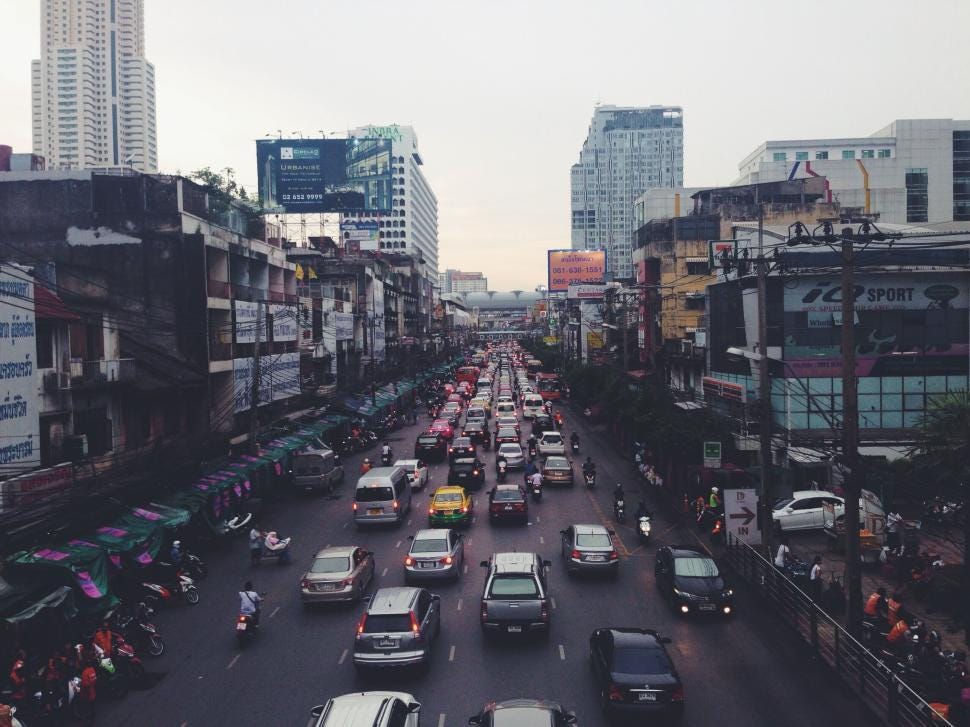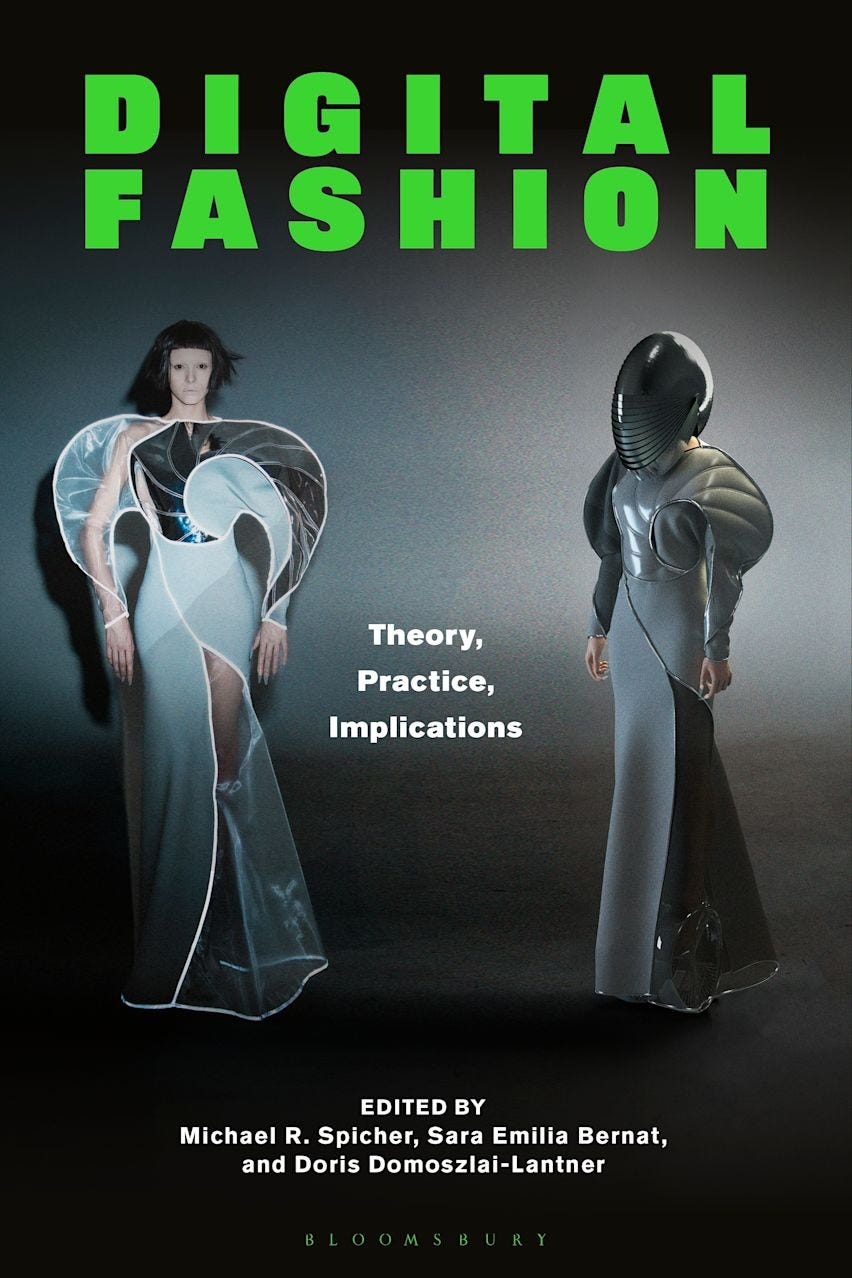In Praise of the In-Between
Reclaiming the Commute as a Space of Meaning
Hello Aesthetics People!
Few people enjoy commuting to work, school, or elsewhere. Sitting in bumper-to-bumper traffic or crammed into a crowded subway car feels like a necessary evil. In fact, not having to commute is likely one of the reasons people were reluctant to return to offices after pandemic restrictions eased up. As Joseph Stromberg notes, the longer the commute, the more anxious and tired people become.
When people talk about going on a hike, even when there’s a specific destination (like a waterfall), the journey still feels meaningful. But the “journey” to get to work often seems devoid of meaning. It’s not an end in itself—it’s merely a means. People are often disconnected from their environment in these moments, focused only on reaching another place. In other words, they have no sense of belonging. It’s a void.
But what if people tried to reframe the purpose of their commute?
Inspiration from Thoughtful Design
Some commutes are beautiful by design or by chance. Even if they can’t be perfectly replicated, they can inspire us to notice more—or to advocate for more thoughtful environments.
Beginning in 1956, the city of Stockholm began commissioning art for its subway system. Today, more than 90 of its stations feature paintings, mosaics, sculptures, and installations—what has been called “the world’s longest art gallery.” Riders don’t just travel from one stop to another; they move through an intentional experience, a gallery in motion.
New York’s Staten Island Ferry passes the Statue of Liberty every day. While locals may become numb to it over time, this daily glimpse of a national symbol framed by sky and water still holds the potential for awe—if only we pay attention.
In Portland, Oregon, parts of the MAX light rail pass through scenic views of the West Hills or cross the Willamette River. Bike commuters there often travel alongside trees, murals, and water. The infrastructure doesn’t just move people efficiently; it allows beauty to be part of the ride.
Other examples could include the high-speed trains of Japan, whose punctuality and quiet calm create a rhythmic, nearly meditative experience, or the cycling paths of Amsterdam, where movement through the city feels intimate and connected.
Of course, not every city is so fortunate. But even in less inspiring environments, the daily commute doesn’t have to be a blank space.
Attending to the Aesthetics of Your Commute
While some things are out of our control—an accident, construction, or a malfunctioning train—we can take back a bit of autonomy by reframing the commute not just as a transition, but as a site of attention.
It’s true that we need to exercise caution if we’re driving, biking, or walking. But that doesn’t mean we have to succumb fully to dread or distraction. Instead of trying to numb yourself through the journey—or gritting your teeth until it’s over—what if you approached it like a ritual?
One thing you can do is intentionally look for aesthetic features around you (while staying safe).
What patterns do you see in the architecture you pass?
How does the morning light shift along your route?
What rhythms are present—the sound of footsteps, the swish of tires, the murmur of conversation?
You can also curate beauty for yourself.
Choose a route with more greenery or more variety, even if it’s a few minutes longer.
Build a rotating playlist that changes with the seasons.
Listen to a poem each morning—or recite one silently to yourself.
Keep a small object with you that reminds you to notice: a stone, a leaf, a quote tucked into your bag.
Even how you dress or move through the commute can become expressive. A flash of color, a well-chosen coat, a purposeful stride—these too are aesthetic acts. Commuting doesn't have to be a disappearing of the self. It can be a small, daily emergence.
Reclaiming the In-Between
Commuting may never be something we love. But it doesn’t have to be something we dread. It can be a space for noticing, for breathing, for gathering yourself before or after a demanding day.
Beauty is not reserved for museums or mountaintops. It shows up in concrete, clouds, signage, and shadows. We can either overlook it or learn to see it.
The philosopher John Dewey once argued that art isn't confined to galleries—it grows out of everyday experience. If we treat our commute as part of that everyday canvas, we might find meaning where we once saw only motion.
*If you want to re-humanize your business, I can help! Let’s chat about collaborating: michaelrspicher@gmail.com
Relevant ARL Articles
The Look of Power: Exploring Political Aesthetics
Performative Beauty and Knowledge by Connaturality
Seeking the Familiar with a Twist
ARL News
My latest article for BeautyMatter asks whether AI flattens our creativity.
I spoke with Emil Drud on Creative Odyssey about aesthetics, well-being, and business. Here’s a link to listen.
Digital Fashion: Theory, Practice, Implications, edited by Michael R. Spicher, Sara Emilia Bernat, and Doris Domoszlai-Lantner, is available for purchase! (Our book was recently featured in a BeautyMatter article.)




The car-free revolution begins in our minds